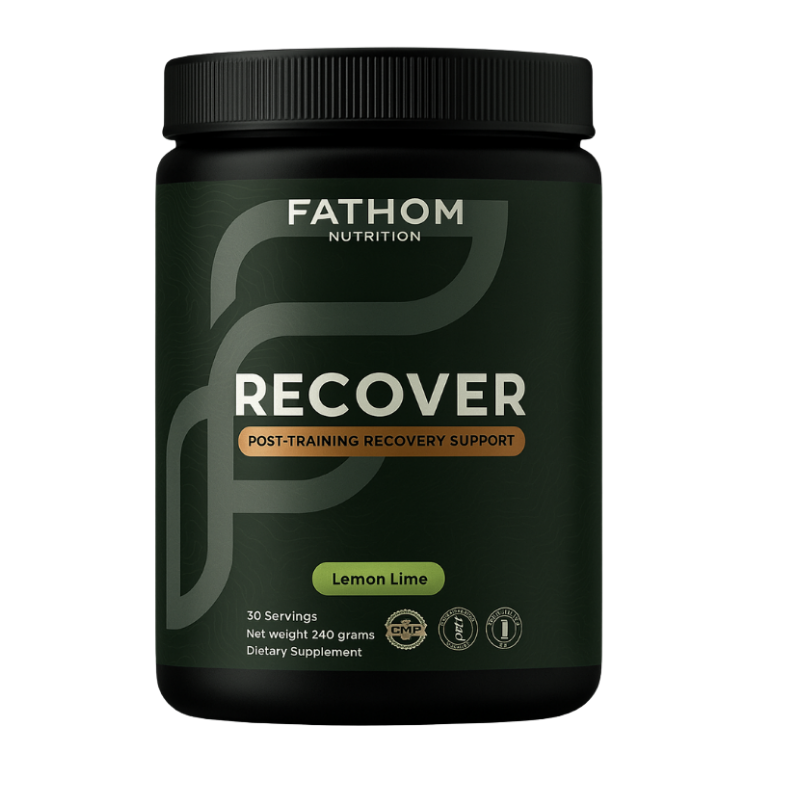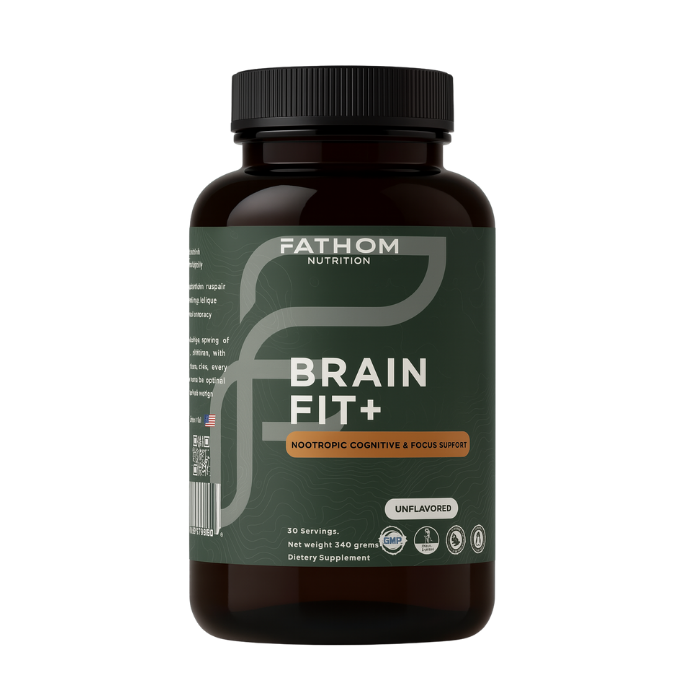Is Creatine Safe for Women? Breaking Down the Science, Myths, and Real-World Applications

If you’ve spent any time reading about strength training, body composition, or athletic performance, you’ve probably come across creatine. It’s one of the most widely studied and commonly used supplements in the world. And yet, for many women, it remains a kind of nutritional gray area—well-known, often misunderstood, and frequently avoided.
The question that comes up again and again is simple: Is creatine safe for women?
The short answer is yes. But short answers don’t often lead to deep understanding. And when it comes to something like creatine—which intersects with metabolism, hormones, cognitive function, and cellular energetics—it’s worth slowing down to look at the bigger picture.
This article is not a hype piece or a reductionist “just take it” post. It’s a look at what the science actually says, what we’ve learned from clinical research and real-world data, and how women might think about creatine differently than men.
Because physiology matters. Context matters. And when we’re talking about optimizing health and performance, specificity is everything.
What Creatine Actually Does (and Why It Matters)
At its core, creatine is a naturally occurring compound found in muscle cells. It’s made in the liver and kidneys, and we also get it through food—primarily red meat and fish. Inside the body, creatine helps regenerate ATP, the primary energy currency of cells. This is especially relevant during short bursts of high-intensity activity, like lifting, sprinting, or any form of anaerobic output.
When you supplement with creatine—typically as creatine monohydrate—you’re increasing the body’s phosphocreatine stores. That means you can produce more ATP, more quickly, and sustain high-intensity efforts for slightly longer. The effect isn’t massive, but it’s repeatable and measurable. And over time, those small increases in output translate to better training sessions, increased strength, more muscle mass, and better recovery.
That’s the performance side.
But there’s more. Creatine also plays a role in brain energetics. There’s emerging evidence that it may help with cognition, especially under stress, sleep deprivation, or neurological decline. It appears to support mitochondrial function, may reduce neuroinflammation, and is currently being explored as a possible adjunct therapy in depression, traumatic brain injury, and even aging-related cognitive decline.
In other words, creatine is not just a gym supplement. It’s a compound with broad physiological implications. Which is why the safety conversation matters.
The Gender Gap in Supplement Research
Before diving into specific concerns, it’s worth acknowledging a broader issue in health science: the underrepresentation of women in clinical trials, especially in sports nutrition. For decades, most studies on creatine (and nearly every other supplement) were conducted on men. Young, often trained, often white, male participants.
That’s slowly changing. More recent trials are including women, and researchers are beginning to ask sex-specific questions. But it means that for a long time, we were operating on an assumption: that what works—and is safe—for men will work just as well for women.
As it turns out, that’s mostly true for creatine. But the nuances are important.
So, Is Creatine Safe for Women?
Yes. Across dozens of peer-reviewed studies, creatine supplementation has been shown to be safe and well-tolerated in women. There is no evidence that creatine damages the kidneys, liver, or heart in healthy individuals. There is no evidence that it causes hormonal disruption, hair loss, or metabolic dysfunction.
The most commonly reported side effect is temporary water retention—an increase in intracellular water as the muscles take up creatine. But this isn’t universal, and it’s not dangerous. It’s a shift in hydration status, not fat gain or bloating. And for most people, it subsides after the first few weeks of supplementation.
Still, the myth persists. Partly because creatine became associated with bodybuilding culture, and partly because women are often socialized to avoid anything that might increase “bulk” or weight.
But the data tells a different story.
In women, creatine supplementation has been shown to:
-
Improve muscular strength and power
-
Support lean muscle mass gains, especially when combined with resistance training
-
Enhance recovery from high-intensity exercise
-
Potentially support cognitive function under stress or sleep loss
-
Reduce risk of sarcopenia in aging populations
This last point is particularly important. Muscle loss with age is not just a cosmetic issue—it’s a health risk. Sarcopenia increases the risk of falls, fractures, insulin resistance, and all-cause mortality. Anything that helps preserve muscle mass—especially in postmenopausal women—is worth paying attention to. Creatine may be one of those tools.
What About Hormones?
One of the more persistent concerns around creatine has to do with hormones. Specifically, the question of whether it affects testosterone, estrogen, or other components of the endocrine system.
Here’s what the research shows: in women, creatine does not increase testosterone. It does not lower estrogen. It does not alter the menstrual cycle or negatively affect reproductive hormones.
In fact, there’s some intriguing evidence suggesting that creatine may actually be more beneficial for women during certain phases of the menstrual cycle. A 2021 study found that creatine supplementation during the follicular phase (the first half of the cycle) was particularly effective in improving exercise performance. The mechanisms aren’t fully understood yet, but they may involve interactions with estrogen and its influence on creatine kinase activity.
There’s also a growing interest in how creatine may support women during pregnancy and postpartum. It’s too early for definitive claims, but preliminary animal studies suggest a protective effect on the developing fetus in cases of hypoxia. Human trials are needed, but the potential here is significant.
Creatine and the Brain
This is an area of research that deserves far more attention. While creatine’s role in muscle performance is well-established, its impact on the brain—especially in women—is an emerging frontier.
Women, especially during menstruation, pregnancy, postpartum, and menopause, experience significant shifts in brain energy demands. Cognitive fatigue, mood instability, and changes in neurotransmitter activity are common. Creatine may help buffer some of these effects by supporting ATP production in neural tissue.
In people with depression, creatine appears to have additive effects when combined with SSRIs. In sleep-deprived individuals, it has been shown to improve reaction time and executive function. And in aging populations, higher creatine intake is associated with better memory and reduced cognitive decline.
We’re only scratching the surface here. But the early signal is clear: creatine is not just a muscular fuel source—it’s a neuroprotective agent.
How Much Creatine Should Women Take?
The standard dose is the same for women as it is for men: 3 to 5 grams per day of creatine monohydrate.
There is no need to “load” creatine with high doses at the beginning. That method, popularized in bodybuilding circles, can accelerate muscle saturation but is unnecessary for most people. A consistent daily dose achieves the same effect over time.
Timing is not critical. Some people take it post-workout. Others with breakfast. The most important variable is consistency.
Creatine monohydrate remains the gold standard. It’s the most studied form, the most cost-effective, and the most stable. Avoid exotic formulations unless you have a very specific reason to do so.
And yes, it’s vegan. While creatine is found in animal foods, the supplement form is synthesized in labs and contains no animal products.
Final Thoughts
Creatine is safe for women. Full stop.
It is not a male-only supplement. It is not a mass-building compound that will make you bulky. It is not dangerous, disruptive, or risky for your health. Quite the opposite.
If anything, creatine represents a missed opportunity. For women looking to increase strength, improve training quality, support cognition, and build resilience—especially with age—it’s a simple, low-cost tool that delivers consistent results.
Like any supplement, it’s not a magic fix. It works best when paired with intelligent training, adequate sleep, and appropriate nutrition. But in terms of impact per gram, creatine is hard to beat.
So if you’ve been on the fence, or misinformed, or hesitant to try it—this is your permission to reconsider. Not because the hype says so. But because the data does.











